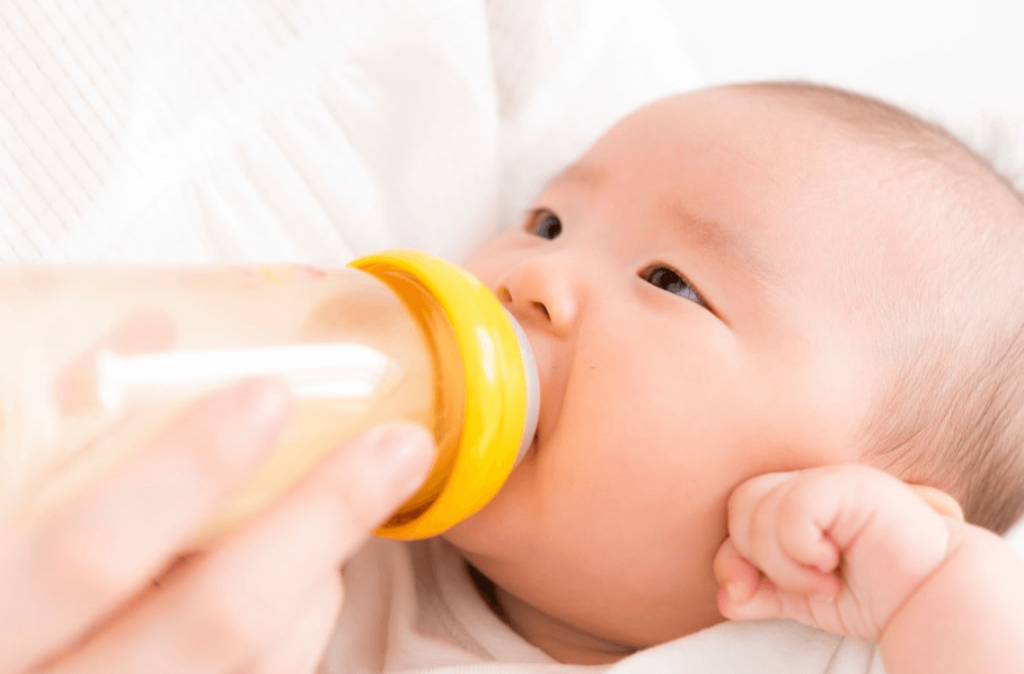A heads up for parents with bottle-fed baby! Recently, there was a study conducted by a few researchers entitled Microplastic Release From The Degradation Of Polypropylene Feeding Bottles During Infant Formula Preparation. One of the aims is to study on the release of microplastics in baby feeding bottles.
The result is quite shocking and puzzling.
It is said that feeding bottles which are made by polypropylene can release up to millions of microplastics and even trillions of nanoplastics per litre.
Thinking on how our little ones are ingesting this much microplastics into their systems is terrifying, isn’t it? However, the reason why it is puzzling many people is that the studies have yet to come out with concrete evidence on the danger that it can bring to the infant. In short, it is still being investigated.
What Causes the Released of Microplastics by Infant Feeding Bottles?
Most plastics are made of polypropylene. This thermoplastic polymer is believed to be the cause of the shedding of the microplastics. Based on the study, there are two factors which can trigger this: heat and formula preparation.
In choosing feeding bottles, isn’t it enough by just making sure they are BPA-free?
Well at first, that might be the case. But after such study was being conducted, people are puzzling over their choices for their little ones.
What Harm Did It Bring to Infants?
As scary as it sounds, the danger of microplastics to infants are still unproven.
We understand that upon knowing this, parents must be freaking out and trying to find ways to prevent this from happening. You can minimise the leak by trying some of the methods below:
What You Can Do to Minimise the Leak
As mentioned above, the two factors that can trigger this are heat and formula preparation. When heated, feeding bottles that are made of polypropylene will shed millions of microplastics.
Take, for example, the sterilisation of the feeding bottle. If you boil them in a pot continuously for quite some time, you might be doing it wrong.
The longer you boil them doesn’t make it any better.
According to the study as mentioned in Independent.co.uk, this can significantly release millions of microplastics when the temperature increases from 25° to 95°C. This link between heat and the leaking of microplastics is suggesting us to change our way.
If we are to reduce the exposure, we can do so by modifying our methods.
1. Sterilisation
To sterilise the feeding bottles clean, you can follow the guidelines by the World Health Organization here. After you have completed the process, let them dry and cool.
After that, ready the sterilised water and cool them down to room temperature. Only then, rinse the sterilised bottles with the sterilised water for at least three times.
It is important for mummies and daddies to note that during the sterilisation and preparation of the sterilised water, you can only use a non-plastic kettle or cooker such as a stainless steel kettle.
2. Formula preparation
The usual steps in preparing formula for babies are; pouring the hot water into the bottle, putting the formula in and shake them well. According to the suggestions of the study, we are doing it wrong all the way through.
As heat can trigger the leak, we have to change our ways from the beginning.
- First, ready the sterilised water by using a non-plastic kettle or cooker. Then, pour it into a non-plastic container with its temperature no less than 70°Celsius.
- Put the formula in and mix it well.
- Let it cool down first and only then, you can transfer it into the sterilised bottle.
- Do remember to pour it slowly and not to shake it.
Why you are not advised to not shake the bottle? This is because, it is believed that even by shaking the mixture at room temperature, it will release the microplastics as well.
As stated in an article by TheScientist, especially if the bottle has been sterilised before, there might be some loose microplastic flakes on the surface that haven’t been removed by cold sterilised water.
So it is important to not shake it but make sure you mix the formula well in the non-plastic container before transferring it into the bottle.
3. Other precautions
Apart from changing our methods in sterilisation and formula preparation, we have to observe our ways in certain circumstances too. For examples:
- Do not reheat the formula in a plastic container or by using the microwave.
- All plastic containers either for formula preparation or breastfeeding has to undergo the same processes.
- Do not clean the bottle by sonication.
It is believed that among the reasons why this happen is due to the low breastfeeding rate. It is without a doubt that mother’s milk brings numerous benefits compared to the formula. And perhaps, this is one of them.
As WHO stated, the breast is best! Apart from trying our best to breastfeed the little ones, let’s give our best too in reducing the risk. Although the effect of microplastics to baby is still unknown, we are advised to do our best in minimising it.
